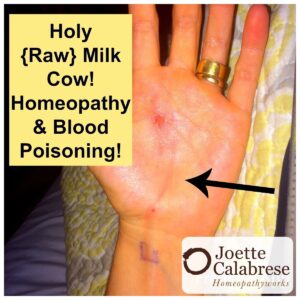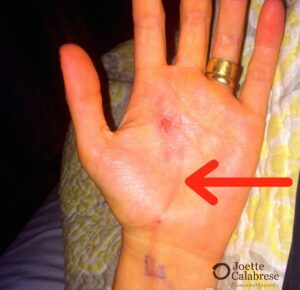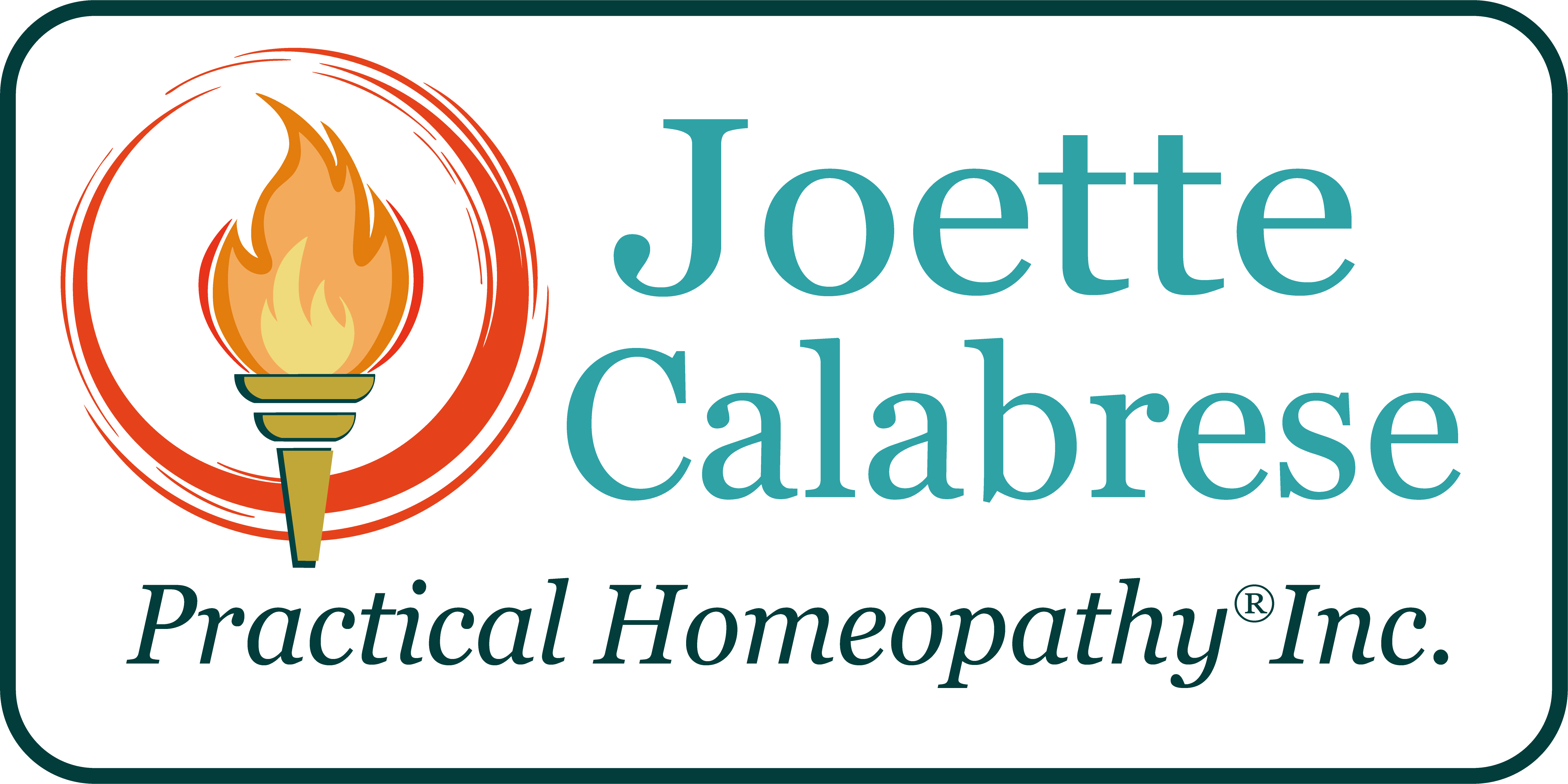
If I could just draw a picture that depicts how busy I have been lately, you would likely see an image of me wearing track shoes, sprinting through a web of family, clients, and projects involving my mission to spread homeopathy to families.
As I sprint, I would be juggling my new waterproof laptop (I spilled tea on my last one), my homeopathy kit, my calendar, and of course, a glass of raw milk.
But when it is time for bed, I sleep soundly as I recharge for the next day.
So when my employee and friend, Paola texted me just shy of midnight with an emergency situation, I didn’t notice the text until 5 am the next day, when I arose with my metaphoric track shoes and juggling gear.
When I heard of her situation that morning, I was not worried. But she was.
Paola lives on a little homestead, far from medical care.
Apparently earlier the day before, she had gotten a minor superficial scratch on her hand. No worry, she thought, but towards the afternoon, her hand was causing quite a bit of pain.
Because she had taken my course The Survivalist's Guide to Homeopathy, she knew the correct protocol to administer if there was a painful cut of that nature, so she took a dose of Hypericum 200 and thoroughly washed the wound.
She went about her busy day (she has her own pair of track shoes and juggling set, which includes 3 home-schooled kids and her own glass of hand-squeezed raw milk). But as she went to bed that night. she looked at her hand: a red streak was descending down from the cut and it had reached her wrist.
“I naturally went onto Google,” she later told me, and according to some sites she was likely witnessing the beginnings of sepsis or even a tetanus infection: “If your cut involves rusty metal,” (it did) “dirt,” (yup) “and manure” (right again), “then you should seek medical attention immediately as this is likely a serious life-threatening infection of Clostridium tetani, or tetanus.”
Holy (raw milk) cow! she thought.
Suddenly she couldn’t think straight. Being well-informed on the dangers of antibiotics, and wanting to avoid a tetanus vaccine, if possible, she tried to think of the correct protocol.
What WAS the correct protocol for a situation like this???
She was sure that somewhere in the corners of her mind, the information about which remedies to take for this situation was there…but she just couldn’t remember it.
The mounting panic had overrun her ability to think clearly.
So then came her frantic text to me, “Joette, are you awake? I have a cut with a red line going down my hand … very worried here. Looks bad and infected …”

it was much more pronounced in person
No response. I was sound asleep!
She was so scared, you can even see the blue pen mark she made on her hand, hoping to be able to see if the line increased in length.
So what did she do?
She began to think about who in her homeopathy study group would be able to help her. One of our study group members in particular—Sherri—came to mind.
Sherri also lives on a farm and is a seasoned mother of three boys who always seem to get some sort of potentially serious injury. Sherri is pretty well versed in first aid and homeopathy.
Within minutes of sending the frantic text, complete with photos, Sherri responded.
“When we get cuts like this that have a line going down, we use something I learned in one of Joette's blogs. It's Hepar sulph 200.”
The two women discussed the situation further, and in the end, the following protocol was administered:
Hypericum 200 mixed with Arsenicum album 200, a Banerji protocol that I teach for certain infections. They decided to follow this with Hepar sulph 200 fifteen minutes later.
Paola also rubbed Calendula cream on the wound. After, of course, having cleaned it thoroughly.
Unable to sleep, Paola stared at her hand for the next two hours and dosed herself one more time before collapsing into sleep. She remembers that the pain had decreased just enough to allow her to slumber.

By morning, her hand looked significantly better: It was oozing puss and purging the infection. The red line was virtually gone! So was the pain! In less than 8 hours!
Paola reached for her phone and saw that I had texted her back in the wee hours of the morning.
I sent along the same remedy schedule her study group mate Sherri had learned from me years ago.
Had that red line not improved, I teach in my courses to use Pyrogenium 200, every 3-6 hours. And of course, it may require medical attention, but in my experience, if used soon enough, it often doesn't.
But she wrote: “Joette, thank you for the reply. The remedies I took last night must have worked as the line is now virtually gone. So is the pain. ![]()
![]()
![]() “
“
Now I am launching my new guided study group curriculum. This story illustrates one of the most wonderful aspects about being a part of a guided study group.
Support.
Community.
Knowledgeable moms and grandmoms helping each other.
I wish I could respond to every inquiry. But I, too, need to sleep! What Paola had at her disposal was a choice of her own knowledgeable group of friends who use homeopathy and have experience with it.
Busy moms don’t know every single remedy and protocol there is. But when your family contracts strep throat, and you come to know the strep throat remedies and experience, you become the ‘strep throat mom’ of the group.
Then if you are like Sherri, and have a band of boys who find their way to injuries, you become the “first aid mom.”
Imagine a group of 10 people who each have their own experiences using homeopathy for both chronic and acute conditions. Or a group of moms who are focused on learning in this fashion so that they can become an expert in their little world of health issues.
This is a powerful force of healers! Whether you're a seasoned homeopathic mom, or new to it, this guided curriculum and organizing your own group is probably just what you're looking for.
Why would someone who already knows and uses homeopathy be interested in putting together such a group? Because included in the curriculum are Banerji Protocols and practical tips that are not found in other homeopathy books. And the best way to immerse yourself in a subject is to study and bring others along.
Why would someone who is new to homeopathy be interested in founding a group? Because comradery is key to taking on a new subject.
This is what spurs me on to teach homeopathy. I want my students to have the ability to create their own little world of healers, which is why I am encouraging moms and grandmoms to start their own study groups using my new guided study group curriculum.
I wrote this curriculum with the busy, juggling mom in mind—track shoes and all. I have created what I wish I’d had when I was raising my young sons and was just learning homeopathy.
Actually, I did start my own study group many years ago, and it was an incredible blessing in my life and the lives of my friends.
If you have friends who want to heal their families, this idea, this curriculum is for you.



I am sooooo excited about this Joette!!! Your work has changed mine and my family’s life forever. I cannot wait to check out your new curriculum and start my own group!
Hi Joette. I am using so much of the information you share on your blogs, and of course through having you treat several of my children. Many times in the past when I have tried to narrow down which remedy was needed, decided on it, but alas, it was not in my kit. So I have added and built up my Boiron kit of homeopathic remedies. I even separate kit just for cold and flu, one for tummy aches and gi problems,and a first aid kit. In my emergency kit I have little labled bags for each common ailments so that in my stress and panic I do not have to rifle around too much. My remedy stash keeps growing as I hear of another one I should have “just in case.I feel prepared….until a read an article like this that mentions a remedy/dose I do not have. How do people handle not having the remedy readily at hand??
You’ve got a valid point, Rebecca; there are thousands of homeopathic medicines. Living in a metropolitan area in Europe, South America, India and certain cities in the US, this is not a problem because homeopathy pharmacies abound. But in the Middle East its certainly not the same. When I began my studies in the early 80’s the medicines were scarce in New York which was one more reason I started a study group in my home. I knew that it was more likely that one of us in the group would have the right remedy or potency if I didn’t. Many times it was a life saver…literally. Meanwhile, for many this lifestyle is so appealing, that they make it their mission to own as many as possible. One more point: There are many ways to skin a cat. As mentioned in this article, Paola used 3 rems. One of them might have done the job if the others were not at hand.
Hello Joette,
I was wondering if there is a protocol for hypoadrenal or adrenal exhaustion. Since there is one for hypothyroid.
Thank you.
Martha
Not specifically for adrenal exhaustion but rather for fatigue that may or may not be associated with the adrenals. You might want to google my name and “fatigue”.
Hi Joette. Would Hepar Sulph alone been able to do the job? That’s the one I have on hand. Or which one remedy was the more important one?
Is this a protocol that would be used for both tetanus and sepsis so long as a red line has presented? I assume this is taught in the Survivalist course? Thanks!
It is indeed taught in Survivalist Course but it doesn’t necessarily need a red line. ITs just that a red line is a common indicator of the condition.
Hi Joettte! In Gateway I you tell a story about cutting your hand with a knife when slicing an avocado and then later that night developing the red line going up your arm. You took Ledum hourly in that case. When would you choose Ledum vs the Hypericum 200 mw Arsenicum 200 and Hepar 200 mentioned in this article?
I got to this article from a post that started with “There are a handful of 200 potency remedies that I would recommend buying, for emergencies. These are NOT found in the 100 Remedy Kit.” THANKS!
In addition to 200C,, I’d LOVE to know which remedies are helpful to stock in the 1M potency and 10M potency.
Hahnemann sells a kit with only 1M and 10M and I’m curious when remedies that strong might be useful??
This discussion of which remedies act in higher potencies might be a great blog topic!!!
I have learned very important how to take care of infections, I will be getting my kits soon. Thank you,